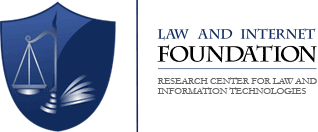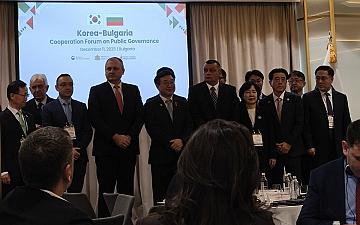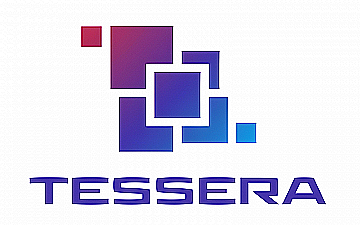Although efforts to combat child trafficking have grown in recent years, the problem remains alarmingly widespread, exacerbated by the rise of digital technology and social media. This blog post explores what child trafficking is, some of the tactics traffickers use to recruit and exploit children, and the dangers posed by online platforms in facilitating the crime.
What is Child Trafficking?
Child trafficking refers to the illegal practice of recruiting, transporting, transferring, harbouring, or receiving children for the purpose of exploitation. Trafficking does not require the movement of children across borders - children can be trafficked within their own country. The forms of exploitation can include forced labour, domestic servitude, child soldiering, sexual exploitation and other abuses such as organ trafficking or illegal adoption.
Child trafficking for sexual exploitation involves forcing or coercing children into sex work, pornography, or other forms of sexual abuse. This crime robs children of their innocence, safety, and future, subjecting them to long-lasting physical and psychological trauma. Traffickers often prey on children who are vulnerable due to poverty, lack of education, or unstable family, manipulating them with false promises for a better life or threats.
In recent years, the internet has become an increasingly common tool for traffickers, making it even more difficult for governments and law enforcement agencies to track illegal activities. Online spaces that were once seen as relatively safe have become dangerous places where exploitation thrives. While international and national legal frameworks play a crucial role in combatting child trafficking, challenges persist due to the digital dimension of the crime. For example, the United Nations Convention on the Rights of the Child and the Palermo Protocol are fundamental international treaties that guide global efforts to combat child trafficking. These frameworks require countries to adopt laws and measures aimed at preventing the trafficking of children, prosecuting traffickers, and protecting the victims. However, most national and international anti-trafficking legal acts do not expressly reference technology-facilitated trafficking in human beings. Additionally, international frameworks governing cybercrime, which are also relevant for tackling technology-facilitated trafficking - do not explicitly include references to trafficking, particularly in relation to children.
Tactics Used by Traffickers to Recruit and Exploit Children Online
Traffickers are increasingly using internet tools to profile, recruit and exploit children. They often turn to social media, gaming apps, and other online platforms, as these digital spaces provide anonymity and allow them to make initial contact with potential victims without physical barriers. Children, particularly those who are isolated, lonely, or seeking attention, may be more susceptible to the grooming tactics used by traffickers. UNODC court case reports identify two main tactics employed by traffickers during the online recruitment phase: "hunting" and "fishing".
The hunting strategy involves actively seeking out vulnerable children on social media and other online platforms. Traffickers begin with seemingly innocent, friendly interactions, often starting casual conversations, which gradually escalate over time. Platforms like Facebook, TikTok, Snapchat, and Instagram offer traffickers access to a wide range of personal information, such as the child’s location, interests, daily activities, and connections with friends and family. By analysing this information, traffickers can identify children who may be more susceptible to manipulation and exploitation. They may initiate contact by posing as peers, pretending to share common interests, or as trusted figures such as family members or mentors, or even someone who the child admires. After the child’s guard is lowered, traffickers typically take things further by manipulating or coercing the child with explicit content. This form of hunting prays on the emotional vulnerabilities of children, making it difficult for them to recognise the danger before they are already trapped.
Another tactic is fishing, where traffickers cast a wider net, luring in multiple children through fake profiles or fake offers. With this approach, they may engage children with manipulative messages or promises of friendship, gifts, or a better life. For example, a trafficker might create a fake social media account pretending to be a modelling agent, offering modelling opportunities or promises of a successful career to attract vulnerable children. They may promise to help the child get into the fashion industry, offering photoshoots or connections with high-profile brands. The goal of this tactic is to entice the child by appealing to their needs, gradually gaining their trust, and working to isolate them from family and friends. Fishing allows traffickers to test various approaches, finding the most vulnerable targets to exploit. Once a trafficker identifies a victim, the manipulation continues, all while subtly normalising inappropriate behaviour.
In addition to social media, online marketplaces have also become a tool for traffickers. They may post deceptive ads or employ coded language to hide their criminal activities, evading detection by law enforcement and platform moderators. Even though websites and social media companies are working to address these issues, traffickers continue to find innovative ways to exploit the anonymity and global reach of the internet. They often use encrypted messaging apps, cryptocurrency, and other tools to keep their activities hidden from authorities.
Once traffickers have gained the child's trust through these recruitment tactics, exploitation quickly follows. One disturbing form of exploitation is live streaming, where traffickers force children to perform explicit acts in real time for paying viewers. In addition to livestreaming, children may be coerced into other forms of sexual abuse, with traffickers using threats, manipulation, and isolation to maintain control over their victims. As the cycle of abuse continues, the child becomes increasingly trapped, with little hope of escape.
The Role of Parents and Guardians
As online platforms become a major avenue for exploitation, parents and guardians have a vital role to play in protecting children from trafficking. Education and awareness are the first lines of defence. Parents should educate their children about the risks of online interactions, emphasising the importance of not sharing personal information, photos, or meeting strangers in person without supervision.
They can also take practical steps to monitor their children's online activities. This includes using parental control apps, setting up safety settings on social media profiles, and regularly discussing their children's online experiences.
Additionally, parents should familiarise themselves with the apps, platforms, and websites their children use. By understanding the digitals tools their children interact with, parents can more easily identify potential risks and guide safe online behaviour.
Building confidence and a sense of self-worth is another important aspect that plays a key role in protecting children from exploitation. Traffickers often target those who feel lonely, neglected, or insecure. By creating a supportive and loving home environment, parents can help children feel valued and less vulnerable to manipulation.
By staying informed about the risks, establishing clear boundaries, and maintaining ongoing, open communication with their children, parents and guardians play a crucial role in creating a protective environment. Their proactive involvement helps equip children with the knowledge and confidence needed to navigate the digital world safely, ultimately reducing the risk of exploitation and trafficking.
The drafting of this blog post is funded by the European Union. Views and opinions expressed are however those of the author(s) only and do not necessarily reflect those of the European Union or the European Commission. Neither the European Union nor the granting authority can be held responsible for them.








